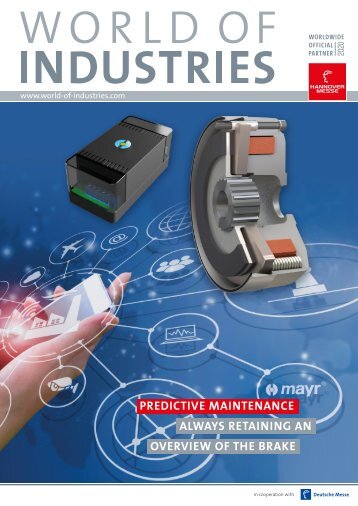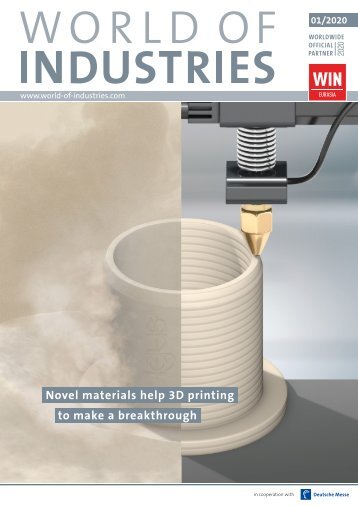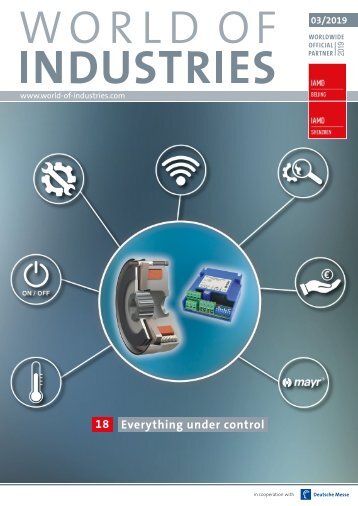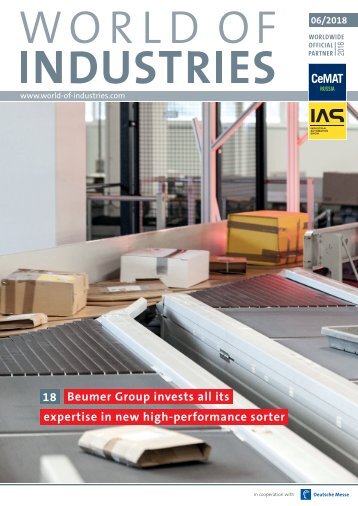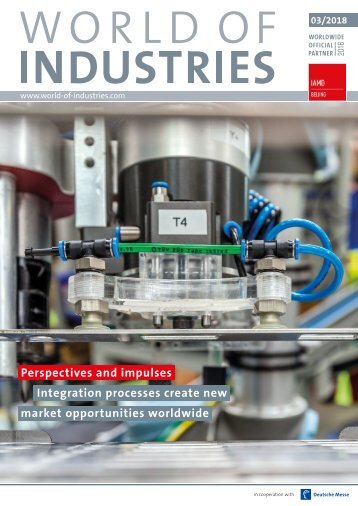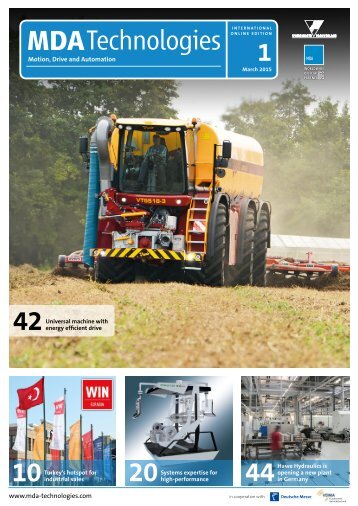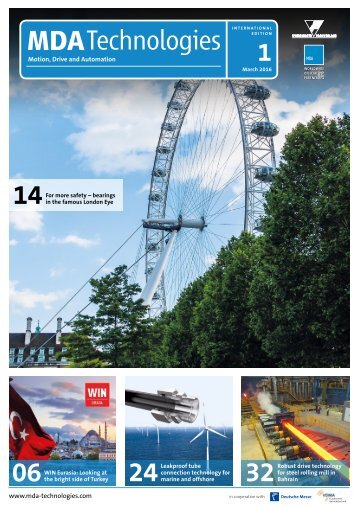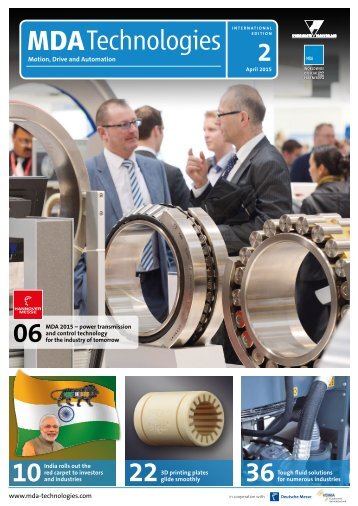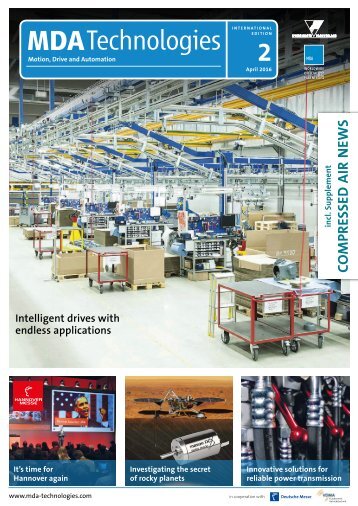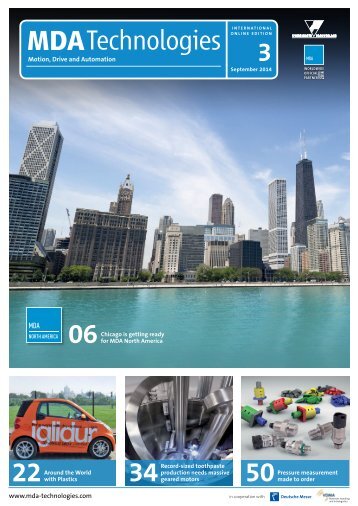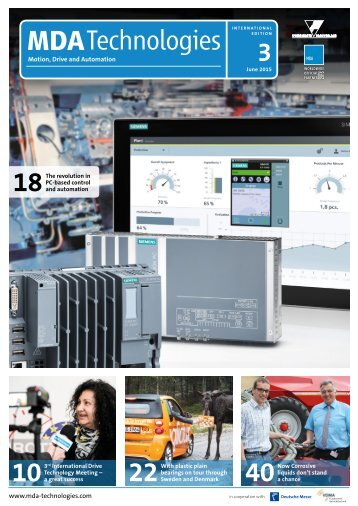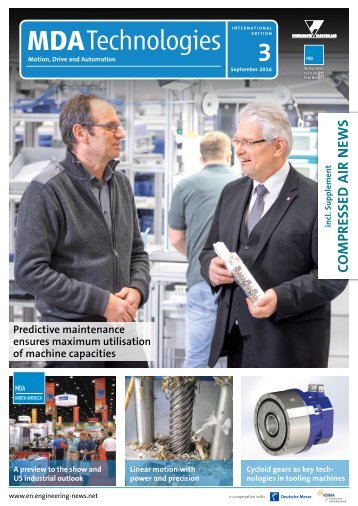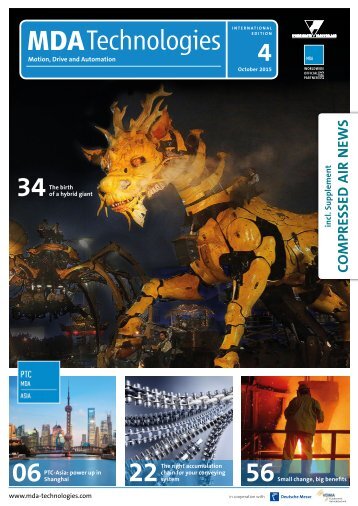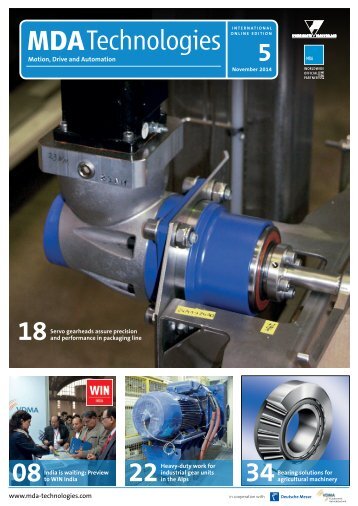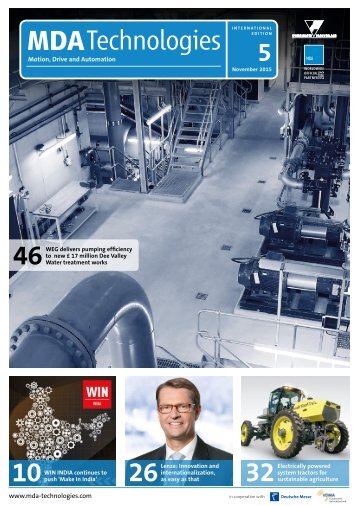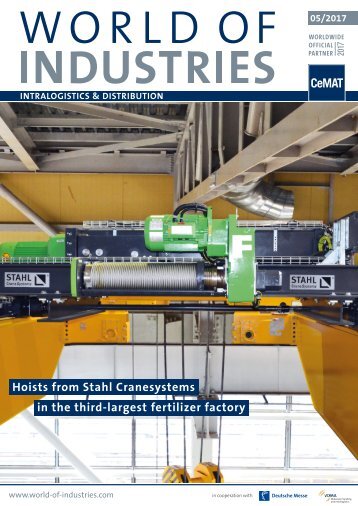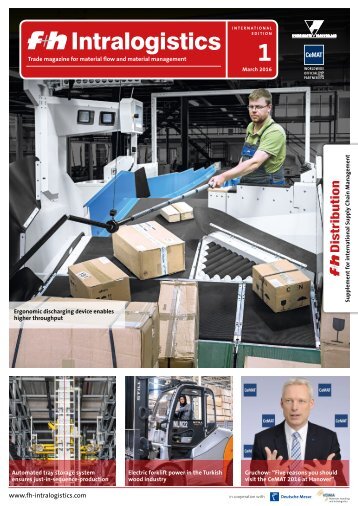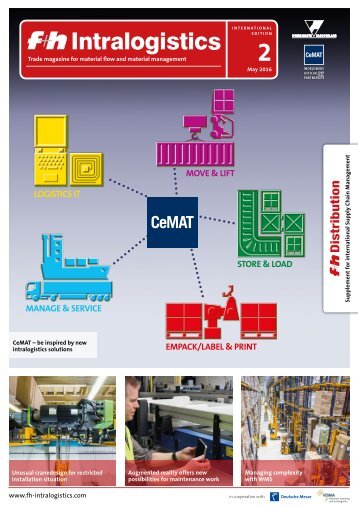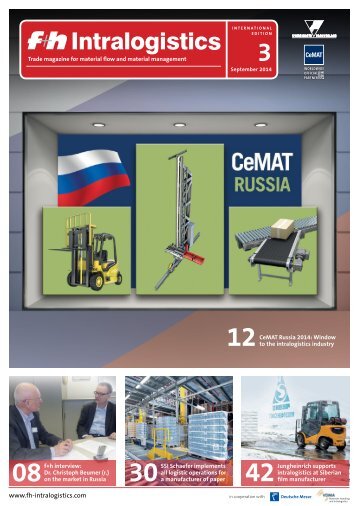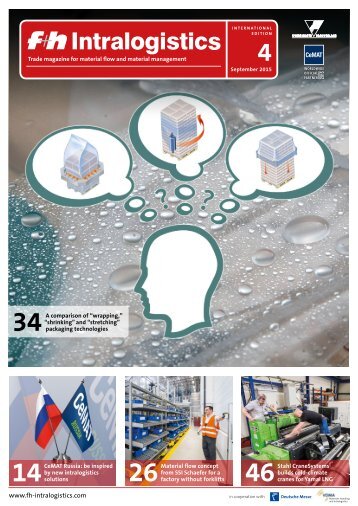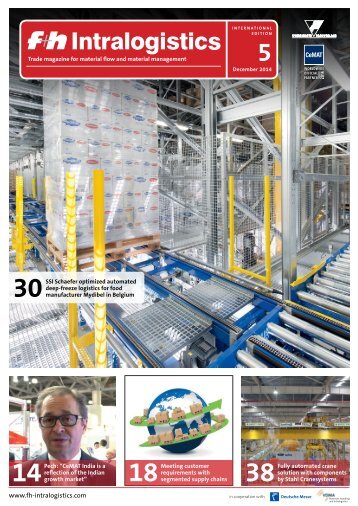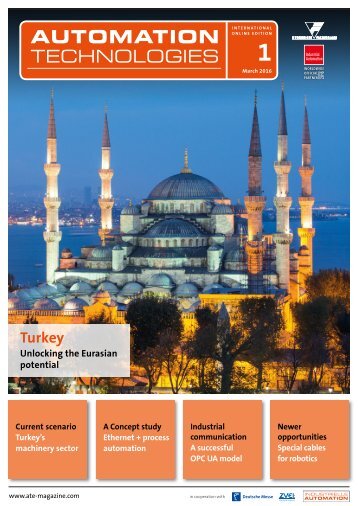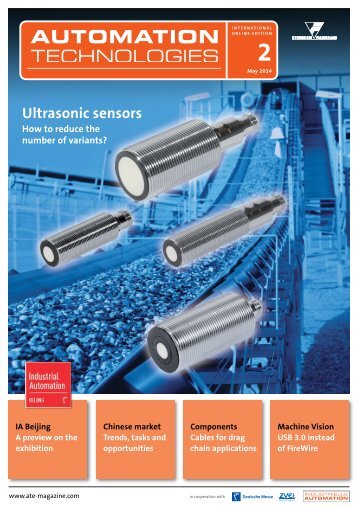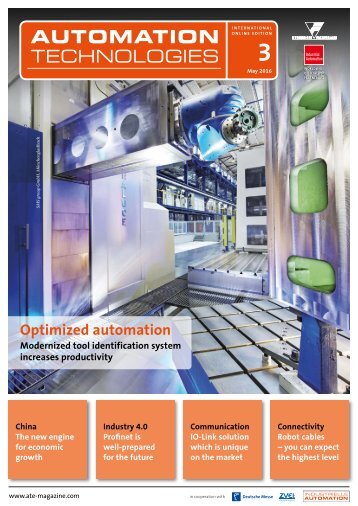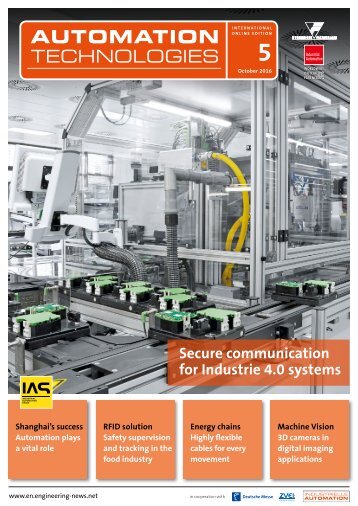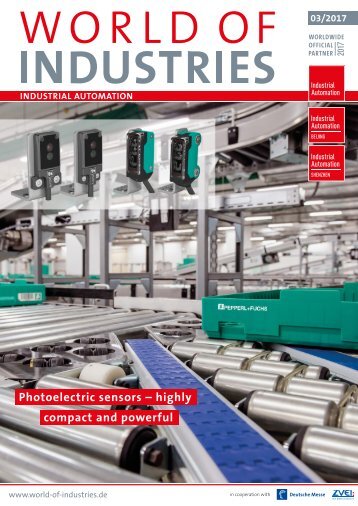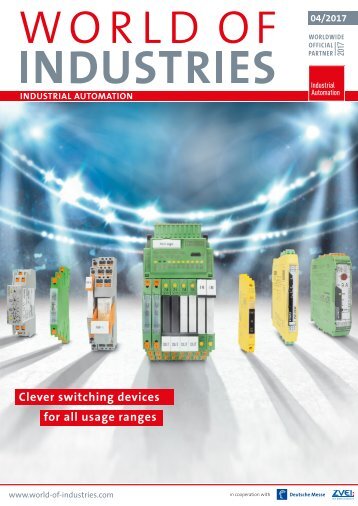Automation Technologies 3/2014
- Text
- Automation
- Technologies
Machine Vision Camera
Machine Vision Camera change with potential: USB 3.0 instead of FireWire Basler ace USB3 Vision cameras are available in resolutions from VGA to 14 MP; they have attractive prices and are easy to integrate René von Fintel How long will I be able to maintain my FireWire camera system? When should I switch, and which interface should I pick? Users of FireWire cameras around the world are wondering these things at the moment. The new USB 3.0 interface and its standard USB3 Vision are an attractive successor due to the technical proximity to FireWire. Basler, a globally active developer of industrial cameras, explains the backgrounds and perspectives. Author: René von Fintel is Team Leader Product Management at Basler AG in Ahrensburg, Germany back to current issue AUTOMATION TECHNOLOGIES 3/2014
Machine Vision next page FireWire doubtlessly is one of the most successful camera interfaces in the world. However, their life cycle is slowly coming to an end. Users of FireWire cameras will be facing the question of how to continue with their camera system in future and which interface to switch to in the medium term. Generally, they have several to choose from. The most important interfaces that are currently an option are USB 3.0, Gigabit Ethernet and Camera Link. Each interface technology has some specific benefits. Gigabit Ethernet is limited to a bandwidth of 100 MB/s, but offers benefits because it can use very long cables (up to 100 m) and makes it easier to set up multicamera systems. Camera Link Full is based on a frame grabber setup, but offers a bandwidth of up to 850 MB/s. Generally, the closer the interfaces are to each other in their technical principles, the easier it will be to switch. This specifically applies when switching from USB 2.0 or FireWire to USB 3.0. The reason for this is that FireWire is no longer supported. There are various reasons for switching from FireWire to another interface. The most relevant ones most certainly are: n FireWire hardware is growing more and more expensive and more and more difficult to procure. It will no longer be available in the medium term. n Changes to the software or transfer to any other operating system require a change. Windows 8 no longer offers natural FireWire support, while the 3.0 Host Controller can be used at once without even installing any drivers. n The bandwidth has grown insufficient for current and, particularly, future requirements to the Vision system, such as higher frame rates, higher resolution and a different pixel format. n Savings in the overall system justify the one-time integration effort quickly. The technology: FireWire versus USB3 Vision It is often said that USB 3.0 and its standard USB3 Vision are the most logical and recommended replacement due to the very similar technical properties. The two interfaces are not only similar, but USB 3.0 also offers true added value, as the table makes clear (see figure 1). Two other important properties should be mentioned: CPU-load and real-time capability. Even data rates in excess of 350MB/s will hardly put any strain on the CPU using USB 3.0, due to its direct memory access on the host computer. Blocks are reserved before image transfer to enable the mechanism to 01 Technical data by FireWire and USB3 Vision in comparison AUTOMATION TECHNOLOGIES 3/2014
- Page 1 and 2:
international Edition 3 August 2014
- Page 3 and 4:
Editorial Discover Industrial Autom
- Page 5 and 6:
Plug-and-play cables ... 20 styles
- Page 7 and 8:
Weidmuller opens facility in the Un
- Page 9 and 10:
Stefan Muller joins CAEMAX Internat
- Page 12 and 13:
AUTOMATION TECHNOLOGIES big our pic
- Page 14 and 15:
AUTOMATION TECHNOLOGIES United Stat
- Page 16 and 17:
News and markets Facts and figures
- Page 18 and 19:
news and markets North America - St
- Page 20 and 21:
AUTOMATION TECHNOLOGIES Industrial
- Page 22 and 23:
NEws and markets Why are you exhibi
- Page 24 and 25:
AUTOMATION TECHNOLOGIES German-Turk
- Page 26 and 27:
AUTOMATION TECHNOLOGIES Gateway to
- Page 28 and 29:
AUTOMATION TECHNOLOGIES Abu Dhabi -
- Page 30 and 31:
Product News Modular control units
- Page 32 and 33:
AUTOMATION TECHNOLOGIES Robust pres
- Page 34 and 35:
AUTOMATION TECHNOLOGIES Fuelling up
- Page 36 and 37:
AUTOMATION TECHNOLOGIES A perfect f
- Page 38 and 39:
AUTOMATION TECHNOLOGIES It’s all
- Page 40 and 41:
AUTOMATION TECHNOLOGIES Components
- Page 42 and 43:
AUTOMATION TECHNOLOGIES Cabinet fre
- Page 44 and 45:
AUTOMATION TECHNOLOGIES Jacks of al
- Page 46 and 47:
AUTOMATION TECHNOLOGIES Motion cont
- Page 48 and 49:
AUTOMATION TECHNOLOGIES Cool beans:
- Page 50 and 51:
AUTOMATION TECHNOLOGIES Integrated
- Page 52 and 53:
AUTOMATION TECHNOLOGIES Quality Sli
- Page 54 and 55:
AUTOMATION TECHNOLOGIES Mobile conf
- Page 56 and 57:
AUTOMATION TECHNOLOGIES The languag
- Page 58 and 59:
AUTOMATION TECHNOLOGIES Around the
- Page 60 and 61:
AUTOMATION TECHNOLOGIES Outsourcing
- Page 62 and 63:
AUTOMATION TECHNOLOGIES Global stan
- Page 64 and 65:
AUTOMATION TECHNOLOGIES Camera chan
- Page 66 and 67:
AUTOMATION TECHNOLOGIES Laser-based
- Page 68 and 69:
AUTOMATION TECHNOLOGIES Thermal ima
- Page 70 and 71:
imprint Editor-in-chief: Dirk Schaa
- Page 72 and 73:
INDUSTRIAL AUTOMATION MDA NORTH AME
- Page 74 and 75:
news and markets United States econ
- Page 76 and 77:
News and Markets Industrial Automat
- Page 78 and 79:
News and Markets back to current is
- Page 80 and 81:
News and Markets back to current is
- Page 82 and 83:
News and Markets Abu Dhabi - why yo
- Page 84 and 85:
News and Markets 02 With its world-
- Page 86 and 87:
Sensors and Measurement Robust pres
- Page 88 and 89: Sensors and Measurement put them ou
- Page 90 and 91: SensorS and Measurement back to cur
- Page 92 and 93: SensorS and Measurement back to cur
- Page 94 and 95: Sensors and Measurement back to cur
- Page 96 and 97: It’s all in the flow: new flowmet
- Page 98 and 99: Controls and drive technology Compo
- Page 100 and 101: Control and Drive Technology back t
- Page 102 and 103: Control and Drive Technology previo
- Page 104 and 105: Controls and Drive Technology back
- Page 106 and 107: Control and Drive Technology back t
- Page 108 and 109: Control and drive technology Motion
- Page 110 and 111: Control and drive technology back t
- Page 112 and 113: Control and Drive Technology Cool b
- Page 114 and 115: Controls and Drive Technology Integ
- Page 116 and 117: Controls and Drive Technology back
- Page 118 and 119: Industrial Communication Quality Sl
- Page 120 and 121: previous page back to current issue
- Page 122 and 123: Industrial Communication back to cu
- Page 124 and 125: previous page The switch parameters
- Page 126 and 127: Industrial Communication The langua
- Page 128 and 129: Industrial Communication back to cu
- Page 130 and 131: Components and Software back to cur
- Page 132 and 133: ack to current issue Outsourcing in
- Page 134 and 135: Components and Software Global stan
- Page 136 and 137: Components and Software previous pa
- Page 140 and 141: Machine Vision previous page back t
- Page 142 and 143: Machine vision Optical test method
- Page 144 and 145: Machine Vision back to current issu
- Page 146 and 147: Machine Vision 03 Schematic of the
Inappropriate
Loading...
Mail this publication
Loading...
Embed
Loading...





